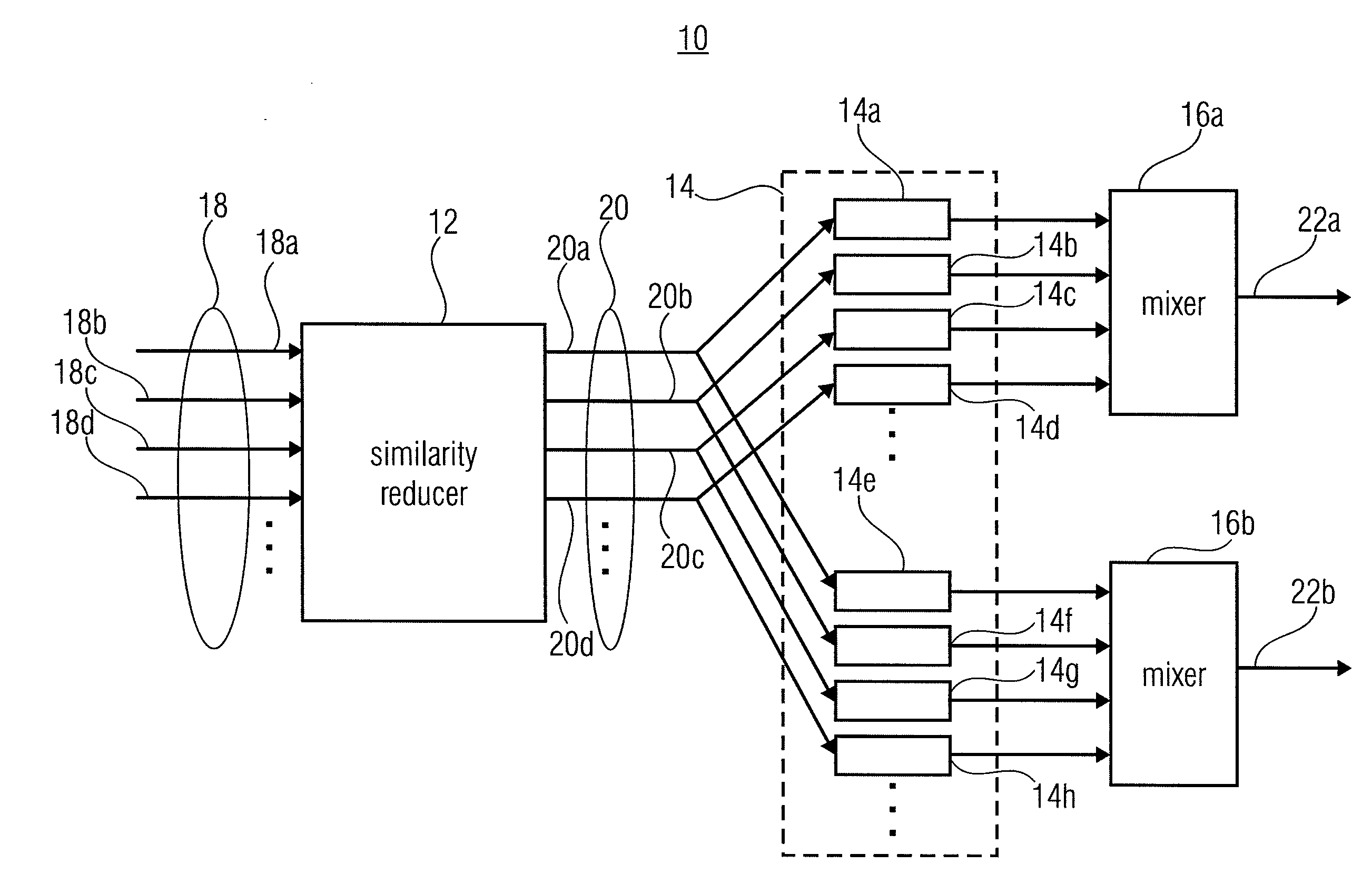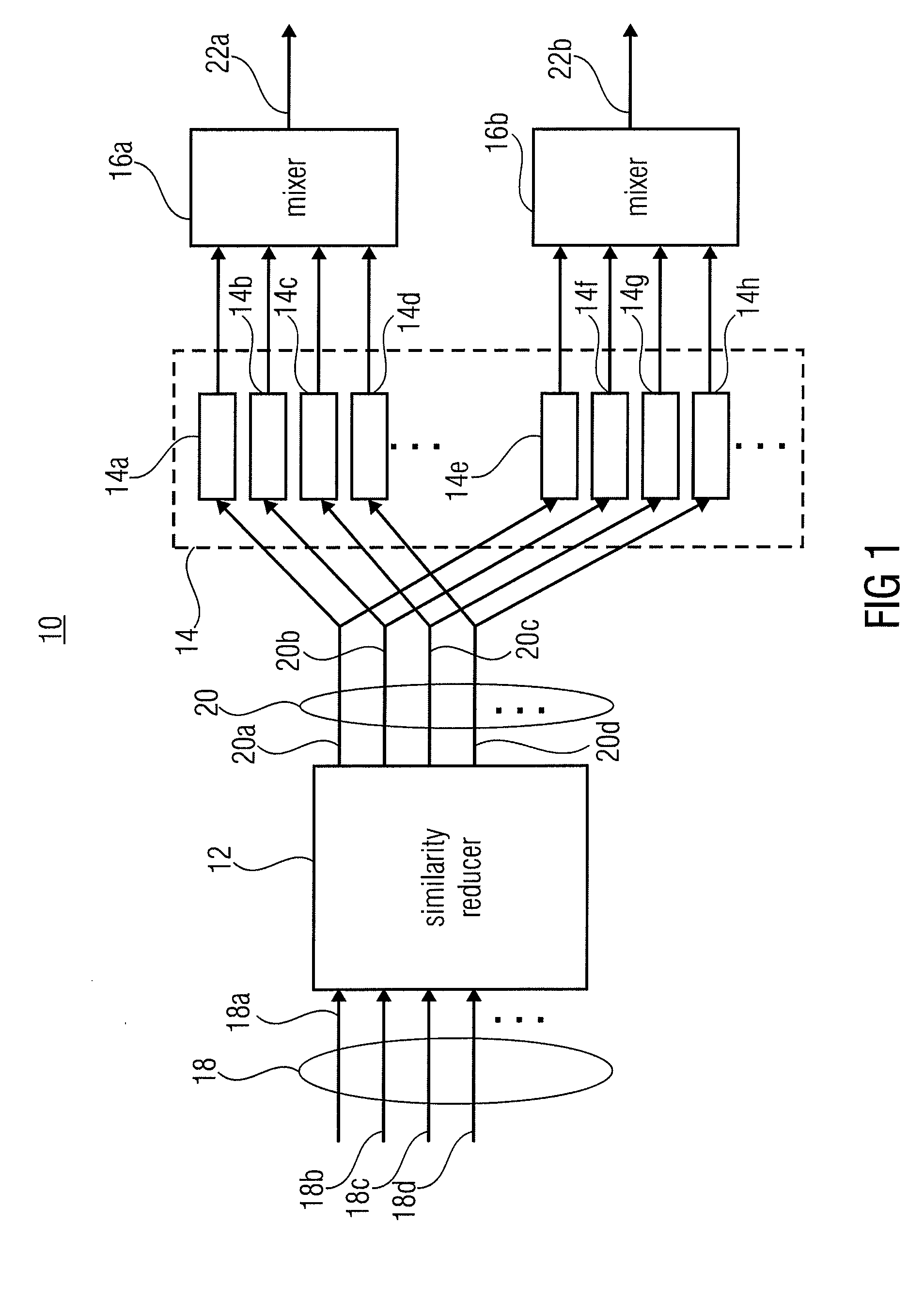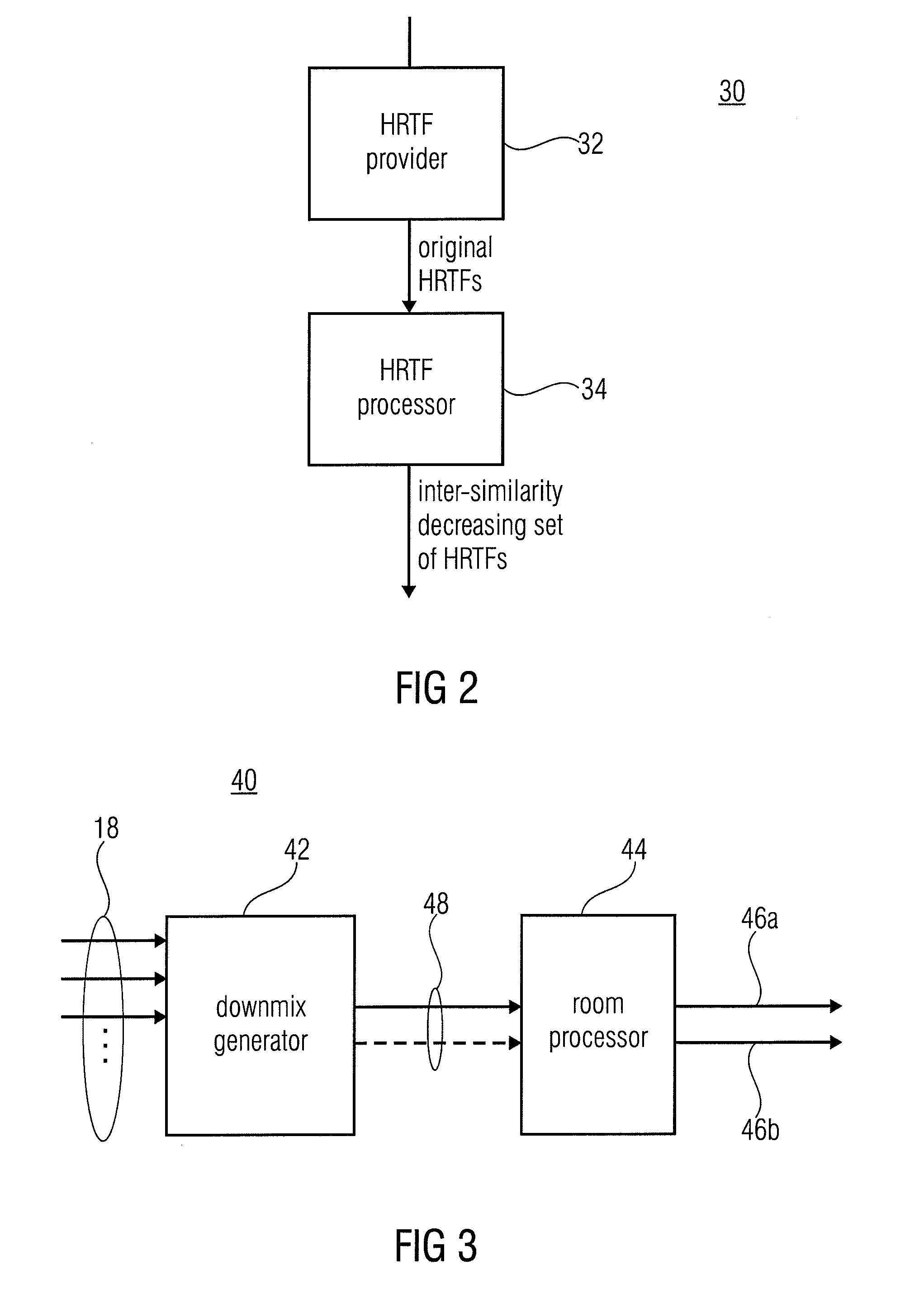Signal Generation for Binaural Signals
a binaural signal and signal technology, applied in pseudo-stereo systems, stereophonic arrangments, electrical apparatus, etc., can solve the problems of unnatural sound, unfavorable listening experience, and inability to achieve the effect of reducing the set of channels, reducing the similarity, and stable and pleasant binaural signals
- Summary
- Abstract
- Description
- Claims
- Application Information
AI Technical Summary
Benefits of technology
Problems solved by technology
Method used
Image
Examples
Embodiment Construction
[0033]FIG. 1 shows a device for generating a binaural signal intended, for example, for headphone reproduction based on a multi-channel signal representing a plurality of channels and intended for reproduction by a speaker configuration having a virtual sound source position associated to each channel. The device which is generally indicated with reference sign 10, comprises a similarity reducer 12, a plurality 14 of directional filters 14a-14h, a first mixer 16a and a second mixer 16b.
[0034]The similarity reducer 12 is configured to turn the multi-channel signal 18 representing the plurality of channels 18a-18d, into an inter- similarity reduced set 20 of channels 20a-20d. The number of channels 18a-18d represented by the multi-channel signal 18 may be two or more. For illustration purposes only, four channels 18a-18d have explicitly been shown in FIG. 1. The plurality 18 of channels may, for example, comprise a center channel, a front left channel, a front right channel, a rear l...
PUM
 Login to View More
Login to View More Abstract
Description
Claims
Application Information
 Login to View More
Login to View More - R&D
- Intellectual Property
- Life Sciences
- Materials
- Tech Scout
- Unparalleled Data Quality
- Higher Quality Content
- 60% Fewer Hallucinations
Browse by: Latest US Patents, China's latest patents, Technical Efficacy Thesaurus, Application Domain, Technology Topic, Popular Technical Reports.
© 2025 PatSnap. All rights reserved.Legal|Privacy policy|Modern Slavery Act Transparency Statement|Sitemap|About US| Contact US: help@patsnap.com



